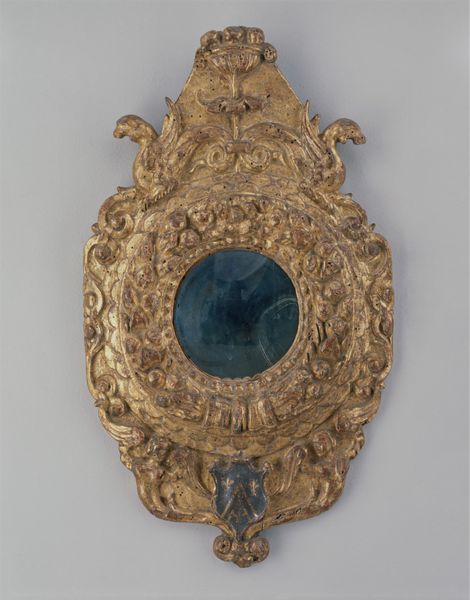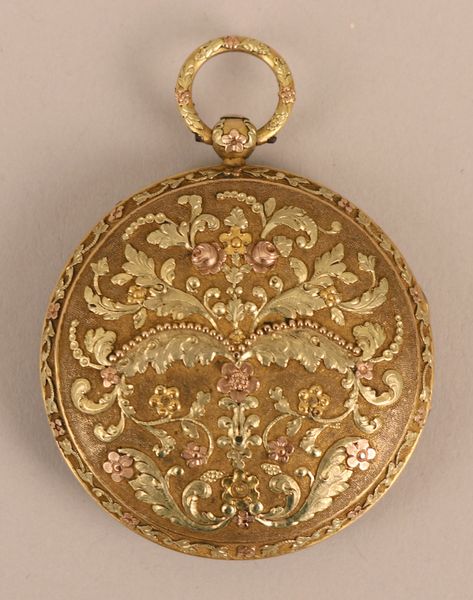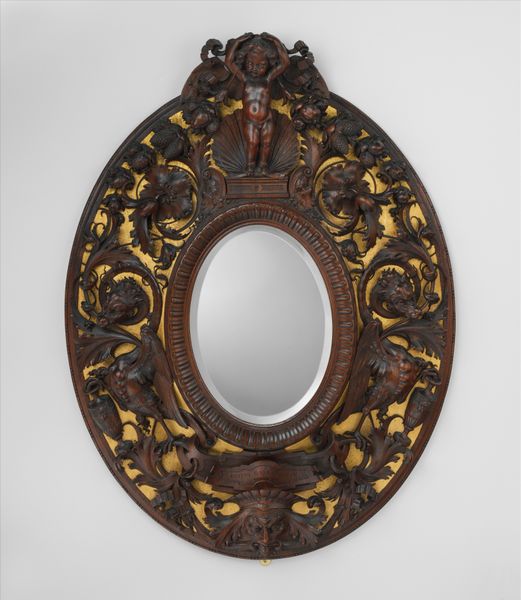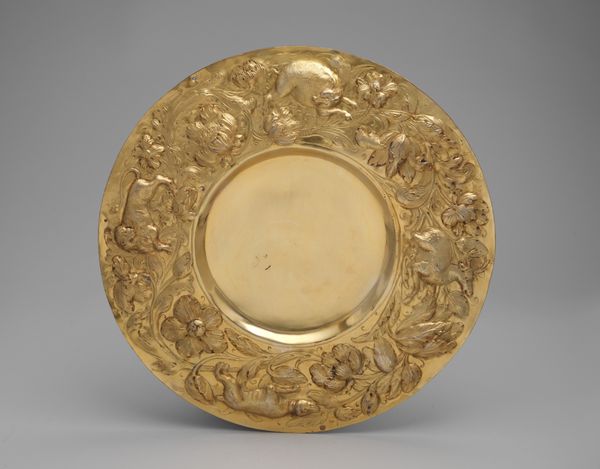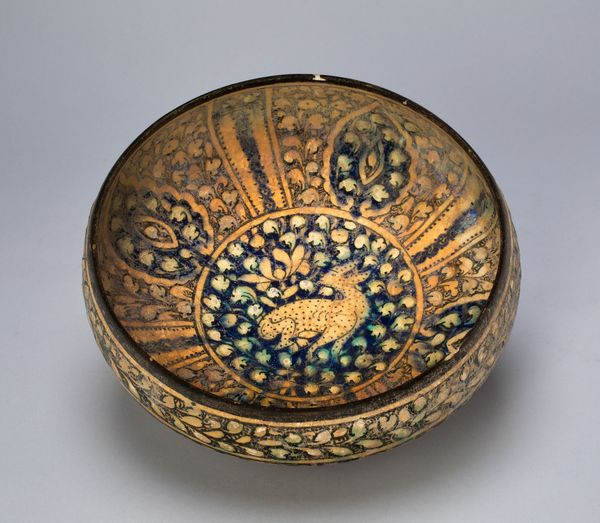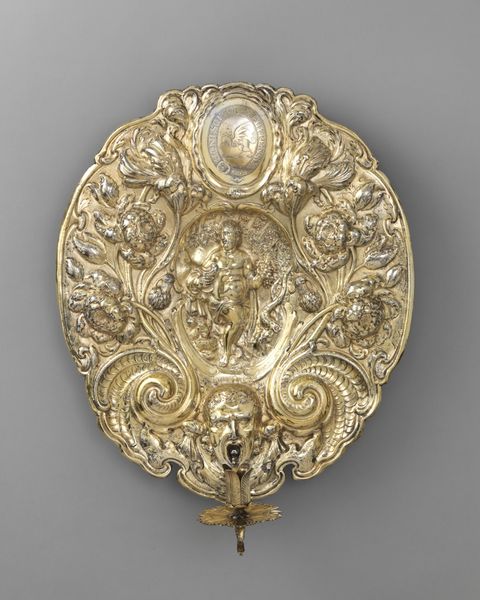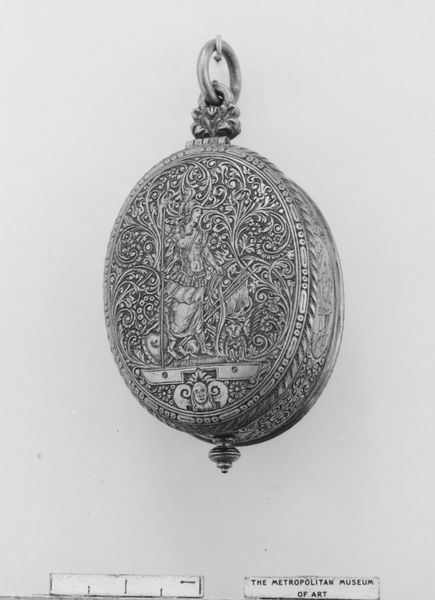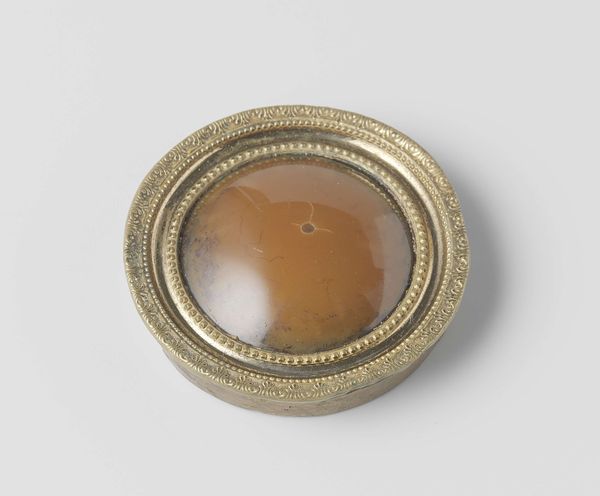
carving, relief, sculpture, wood
#
portrait
#
carving
#
sculpture
#
relief
#
figuration
#
sculpture
#
wood
#
decorative-art
#
italian-renaissance
Dimensions: Overall: 21 7/16 × 14 3/4 in. (54.5 × 37.5 cm) Sight: 5 × 5 1/8 in. (12.7 × 13 cm)
Copyright: Public Domain
Curator: Immediately striking. A sort of tarnished grandeur... those cherubic figures clutching a heraldic shield—it’s wonderfully unsettling. Editor: It's indeed captivating. What we're observing here is a tondo mirror frame created around 1480 by Benedetto da Maiano, a sculptor of the Early Renaissance. Carved in wood and then ornamented, it serves not only as a looking glass, but also as an intricate piece of artistry. Curator: A looking glass... a Renaissance symbol of self-regard, perhaps. I’m drawn to the wreath encircling the mirror itself. It gives an impression of honor or victory. It is intriguing how reflective surfaces were incorporated into daily life back then. Editor: Precisely. It certainly speaks to how Renaissance elites fashioned and perceived themselves, reflecting aspirations to both social status and idealized beauty. The decorative embellishments around the border also suggest cultural codes related to identity, legacy and perhaps even lineage. The cherubs, the shield, all these symbols convey messages. Curator: Yes, there’s that Renaissance preoccupation with earthly honors but filtered, wouldn't you say, through a religious lens? It reminds me a bit of Donatello’s fondness for merging pagan and Christian symbols to emphasize transcendence. Editor: It also speaks to a changing world, a movement towards humanism. If mirrors in this period, especially among elite families, signify wealth and status, who is kept from viewing their reflection and why? There is always a conversation to be had about what these objects tell us regarding privilege and inclusion. Curator: I appreciate that reading. It makes me see it in a different light, like something more than decorative. This simple domestic item can be regarded now as something much more politically charged. Editor: Indeed. Looking at this mirror through that lens gives a sense of the wider socio-cultural matrix in the Renaissance era. And these types of considerations enrich how we appreciate the material realities of works like the Maiano piece. Curator: It’s a reminder that a mirror shows you far more than your immediate reflection—it shows you echoes of a different, distant, era. Editor: And it is our duty to unpack those complex and evolving messages.
Comments
No comments
Be the first to comment and join the conversation on the ultimate creative platform.
